 Vignoble Provence Grimaud Var 38
Vignoble Provence Grimaud Var 38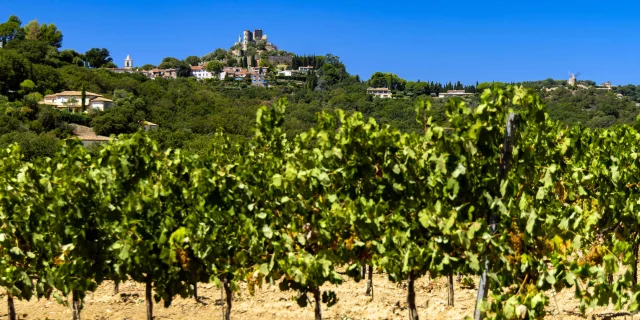 Vignoble Provence Grimaud Var 50
Vignoble Provence Grimaud Var 50Wine cellars and vineyards
Rosé was born here in Provence!
You’ve almost certainly heard this said by a local chap from Provence. (Imagine him with the local accent, pronouncing ‘vé!’ at the end of his sentence just to give you a feel of the atmosphere).
Vine growing dates back many a century and this land of Provence is one of the most famous wine regions in France and across the world… thanks to rosé from Provence.
Winemaking in Provence dates back to Antiquity, around the 6th century B.C. We can certainly say that over all this time, our winemakers know what they’re doing! This was when the Greeks founded the city of Massilia, today’s Marseille, and they brought with them their own grape varieties and winegrowing techniques. After taking over the region, the Romans developed this practice even further!
 Vignoble Provence Grimaud Var 38
Vignoble Provence Grimaud Var 38 Vignoble Provence Grimaud Var 37
Vignoble Provence Grimaud Var 37 Vignoble Provence Grimaud Var 35
Vignoble Provence Grimaud Var 35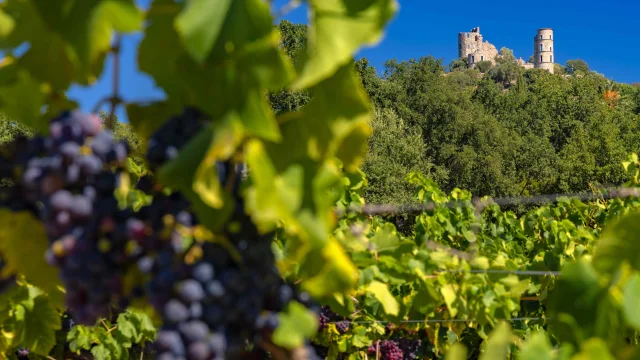 Vignoble Provence Grimaud Var 43
Vignoble Provence Grimaud Var 43In Grimaud
The winegrowers of the Grimaud region nurture the vines throughout the year to obtain the best possible grapes to produce rosé, red and white wines.
Their goal is to offer you a great tasting experience (always in moderation).
At the end of the summer comes the grape harvest season
The vine, the land, the terroir, the rosé of Provence, the coming and going of tractors… The harvest season takes place between August and September.
At this time of year, the grape harvesters gather the bunches of grapes with great care and attention. They are then taken to the wineries to be pressed and turned into wine according to the methods that have made Provence wines so famous.
White, red, rosé… All that’s left to do is choose your colour!
An experience in the Grimaud vineyards
If you are a fan of nature and wine, why not come and explore the vineyards?
The wines of Provence have the Mediterranean climate to thank!
The climate in Provence plays a key role in wine production. This climate is characterised by hot and sunny summers, mild winters and moderate rainfall, offering the ideal conditions for growing vines.
The long sunny days encourage optimal ripening of the grapes, boost the intensity of their flavours and sugar concentration. The sea breeze brings much-needed freshness to maintain the perfect balance between acidity and sweetness for the grapes.
This combination of climatic factors means that grape varieties such as Grenache, Syrah and Mourvèdre flourish here, producing light and fruity rosé wines, complex and balanced red wines, all oozing the sun-kissed essence of Provence.
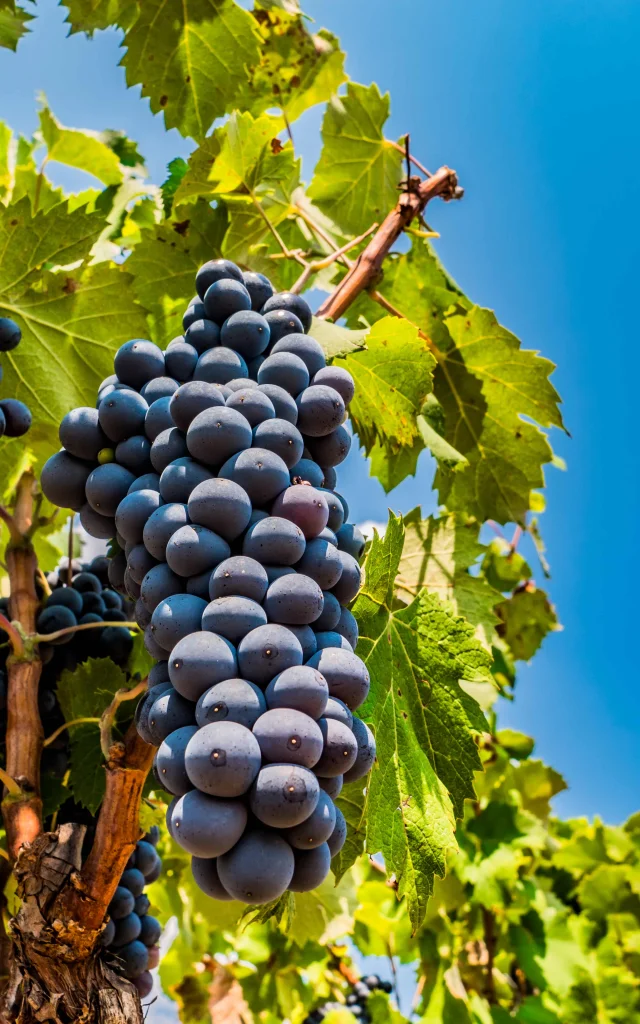 Vignoble Provence Grimaud Var 47
Vignoble Provence Grimaud Var 47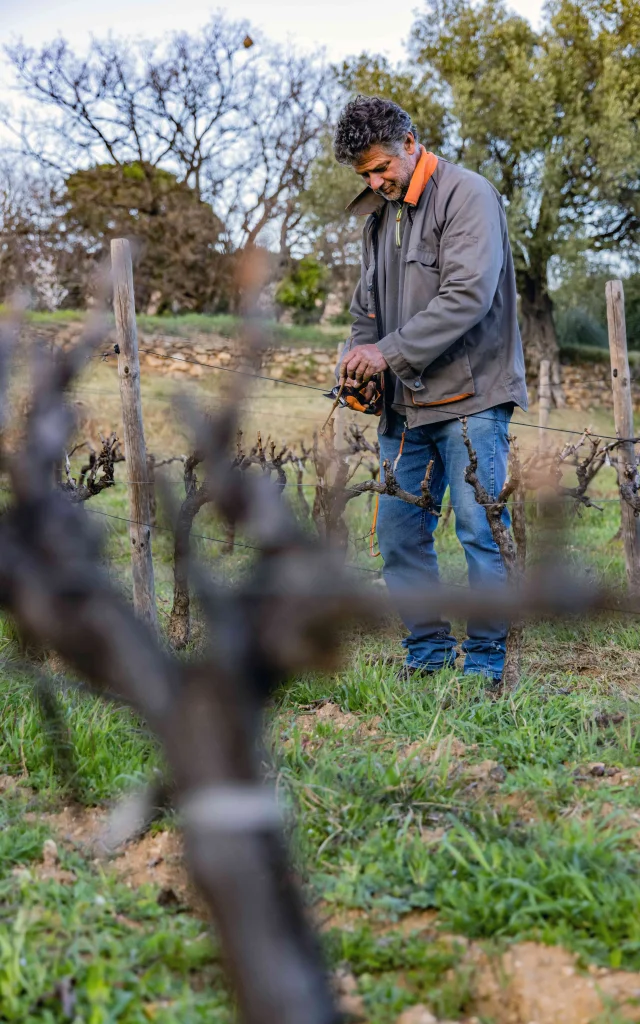 Vignoble Provence Grimaud Var 45
Vignoble Provence Grimaud Var 45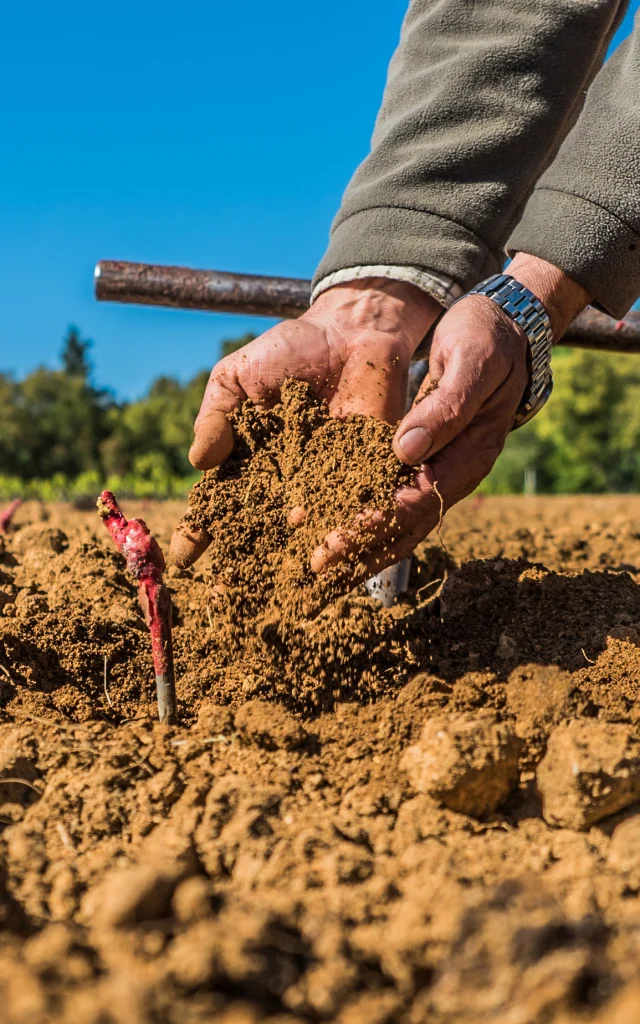 Vignoble Provence Grimaud Var 46
Vignoble Provence Grimaud Var 46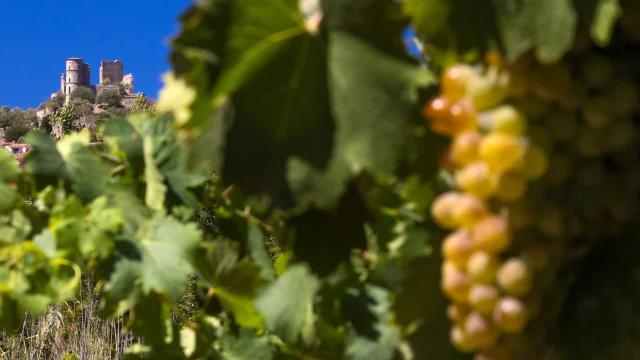 Vignoble Provence Grimaud Var 48
Vignoble Provence Grimaud Var 48Grape varieties used to produce Provence rosé
In Grimaud, just like a number of other places in Provence, rosé wines are produced using several traditional grape varieties. The main grape varieties used to produce rosé in this region are:
– Grenache: A very popular grape variety for Provence rosé, providing red fruit aromas and a great structure in the mouth.
– Cinsault: This grape variety is often blended with others and adds a fresh note and light fruity aromas.
– Syrah: Adds colour and spicy notes to the wine, as well as a certain complexity.
– Mourvèdre: This grape variety is used for its intense aromas and ability to age well, and also provides spicy and black fruit notes.
– Tibouren: A grape variety that is native to Provence and sometimes used to add a touch of local character with fruity and flowery aromas.
The AOC, the pride of Provence
Have you heard of the Controlled Designation of Origin (AOC)? This is a French label that guarantees that a farming or food product, such as wine, is produced in a specific geographic area, according to traditional production methods, and in keeping with a strict set of quality criteria!
There are nine Controlled Designation of Origin (AOC) labels in the vineyards of Provence:
– Côtes-de-Provence
– Côteaux-d’Aix-en-Provence
– Côteaux-des-Baux-de-Provence
– Côteaux-Varois-en-Provence
– Pierrevert
– Bandol
– Bellet
– Cassis
– Palette
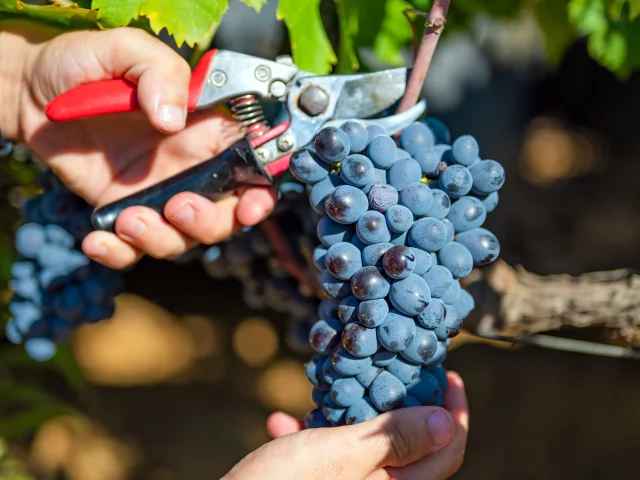 Vignoble Provence Grimaud Var 49
Vignoble Provence Grimaud Var 49Good to know
Grenache is a very versatile red grape variety originally from Spain (where it is called Garnacha). Today, it is grown all over the world, in France, Italy, Australia and even in the United States.
This grape produces powerful red wines and very fruity rosé wines, with strawberry and raspberry aromas and spicy notes. Grenache wines often have a high alcohol content, are not very acidic and have mild tannins. Ideally blended with other grape varieties such as Syrah and Mourdèvre.
Syrah is also known as Shiraz in Australia, and is a red grape variety that originated in France’s Rhone Valley. It is grown in many winegrowing regions across the globe, such as Australia, South Africa and California. Syrah produces deep and powerful red wines with intense black fruit aromas (blackberry, blackcurrant), black pepper and sometimes smoky or liquorice notes.
These wines are often rich in tannins and have a high alcohol content, which means they age well. Syrah is also used as part of a blend, particularly in the famous GSM (Grenache, Syrah, Mourdèvre) trio, providing structure and complexity.
Cinsault is a ray of sunshine is the world of wine! This red grape variety is originally from the south of France and is celebrated for its ability to produce light and refreshing rosé wines, ideal for sunny days. With its delicate strawberry and flowery aromas, Cinsault adds a soft and elegant touch to traditional blended Provence wines.
This grape variety flourishes in hot climates and well-drained soils, where it reaches its full aromatic potential. Cinsault is the perfect example of the Mediterranean art of living in a bottle, and is ideal for moments of relaxation and socialising!
Mourvèdre is a red grape variety from the Mediterranean region that provides intense notes of black fruit, spices and sometimes even leather to certain blends. Mourvèdre grapes flourish in hot climates and rocky soil, developing rich tannins and an intense acidity which in turn provide wines that age exceptionally well.
Often associated with Grenache and Syrah in the famous GSM (Grenache, Syrah, Mourvèdre) blends, this grape variety provides structure and complexity, making each glass a voyage for the senses across the sun-kissed landscapes of Provence.
Tibouren is a relatively rare red and white grape variety, originating in the Mediterranean region, mainly grown in the south of France and particularly in Provence.
This grape variety is known for its delicate and fragrant rosé wines, and often provides subtle red fruit, citrus fruit and white blossom aromas when blended with other varieties. Tibouren is appreciated for its delicacy and elegance, and contributes to producing fresh, balanced wines, perfectly adapted to the hot and sunny climate of Provence.
AOC (Controlled Designation of Origin) is a French label that guarantees that a product – mainly in the world of wine – comes from a specific region and respects strict, traditional methods.
PDO (Protected Designation of Origin) is the European equivalent, created to protect agricultural and food products across the European Union. The PDO label also covers AOC products, offering recognition and protection on a European scale, facilitating trade and ensuring consistent quality.
The soils of the Provence vineyards are diverse and contribute to the complexity of wines produced in the region. There is great variety in the types of soils, from clay-limestone soil to sandy and gravel soil, shaly soil and red soil.
Each type of soil provides the grapes its own distinctive qualities, influencing their structure, their mineral concentration and their aromas. For example, clay-limestone soil often has good water retention and a slow ripening process for grapes, while shaly soil gives the wines a distinctive mineral taste.
This diversity of soils allows winegrowers to choose the best grape varieties and winegrowing practices to make the most of each vine plot’s unique terroir.








